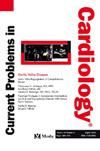Systematic review and meta-analysis of right ventricular changes in cancer-therapy - The forgotten ventricle in cardio-oncology
IF 3.3
3区 医学
Q2 CARDIAC & CARDIOVASCULAR SYSTEMS
引用次数: 0
Abstract
Introduction
Cancer therapy-induced cardiotoxicity (CTRCD) is a significant adverse effect of oncologic treatment, associated with considerable morbidity and mortality. Among CTRCD, heart failure stands out in prevalence and severity, with left ventricular dysfunction being the focus of most studies. Right ventricle (RV) may also be damaged by CTRCD, however the effects of CTRCD on RV function (RVF) have not been elucidated.
Objective
We aimed to conduct a systematic review and meta-analysis evaluating RV echocardiographic parameters in patients undergoing chemotherapy.
Methods
PubMed, Embase and Cochrane were searched for studies that evaluated RV parameters during cancer therapy. Statistical analysis was performed using the R statistical software. We computed pooled mean differences (MD), adopting a random-effects model, with a significance level of 0.05. A correlation coefficient of 0.5 was assumed for paired measurements. Heterogeneity was assessed using the I² statistic.
Results
We included 1,520 patients from 25 studies, 73 % of whom were women and with a mean age of 51.1 ± 16.5 years. RVF was significantly lower after CTRCD, with reduction in fractional area change (MD=-2.29 % [95 % CI:3.63,-0.95]), RV global longitudinal strain (MD=2.49 % [95 % CI: 1.73, 3.25]), and RV free wall strain (MD=3.21 % [95 % CI: 2.32, 4.11]). Additionally, tricuspid annular plane systolic excursion was significantly reduced (MD=-1.44 mm [95 % CI:1.94, -0.95]) and pulmonary artery systolic pressure was significantly higher (MD=1.60 mmHg [95 % CI: 0.64, 2.56]) after chemotherapy.
Conclusion
The assessment of RVF is important in CTRCD, and its quantification should be included in clinical follow-up during cancer treatment. Further research is needed to elucidate the underlying factors contributing to RV dysfunction and to develop methods for its early detection.
癌症治疗中右心室改变的系统评价和荟萃分析——心脏肿瘤学中被遗忘的心室。
简介癌症治疗诱发的心脏毒性(CTRCD)是肿瘤治疗的一个重要不良反应,与相当高的发病率和死亡率相关。在 CTRCD 中,心力衰竭的发病率和严重程度尤为突出,左心室功能障碍是大多数研究的重点。右心室(RV)也可能受到 CTRCD 的损害,但 CTRCD 对右心室功能(RVF)的影响尚未阐明:我们旨在对化疗患者的 RV 超声心动图参数进行系统回顾和荟萃分析:方法:我们在 PubMed、Embase 和 Cochrane 上检索了评估癌症治疗期间 RV 参数的研究。使用 R 统计软件进行统计分析。我们采用随机效应模型计算了汇总平均差(MD),显著性水平为 0.05。假设配对测量的相关系数为 0.5。采用 I² 统计量评估异质性:我们纳入了来自 25 项研究的 1,520 名患者,其中 73% 为女性,平均年龄为 51.1±16.5 岁。CTRCD 后 RVF 明显降低,分数面积变化(MD=-2.29% [95% CI:-3.63,-0.95])、RV 整体纵向应变(MD=2.49% [95% CI:1.73, 3.25])和 RV 游离壁应变(MD=3.21% [95% CI:2.32, 4.11])均有所降低。此外,化疗后三尖瓣环平面收缩期偏移显著减少(MD=-1.44mm [95% CI: -1.94, -0.95]),肺动脉收缩压显著升高(MD=1.60mmHg [95% CI: 0.64, 2.56]):结论:RVF 的评估在 CTRCD 中非常重要,其量化应纳入癌症治疗期间的临床随访中。需要进一步研究以阐明导致 RV 功能障碍的潜在因素,并开发出早期检测 RV 功能障碍的方法。
本文章由计算机程序翻译,如有差异,请以英文原文为准。
求助全文
约1分钟内获得全文
求助全文
来源期刊

Current Problems in Cardiology
医学-心血管系统
CiteScore
4.80
自引率
2.40%
发文量
392
审稿时长
6 days
期刊介绍:
Under the editorial leadership of noted cardiologist Dr. Hector O. Ventura, Current Problems in Cardiology provides focused, comprehensive coverage of important clinical topics in cardiology. Each monthly issues, addresses a selected clinical problem or condition, including pathophysiology, invasive and noninvasive diagnosis, drug therapy, surgical management, and rehabilitation; or explores the clinical applications of a diagnostic modality or a particular category of drugs. Critical commentary from the distinguished editorial board accompanies each monograph, providing readers with additional insights. An extensive bibliography in each issue saves hours of library research.
 求助内容:
求助内容: 应助结果提醒方式:
应助结果提醒方式:


